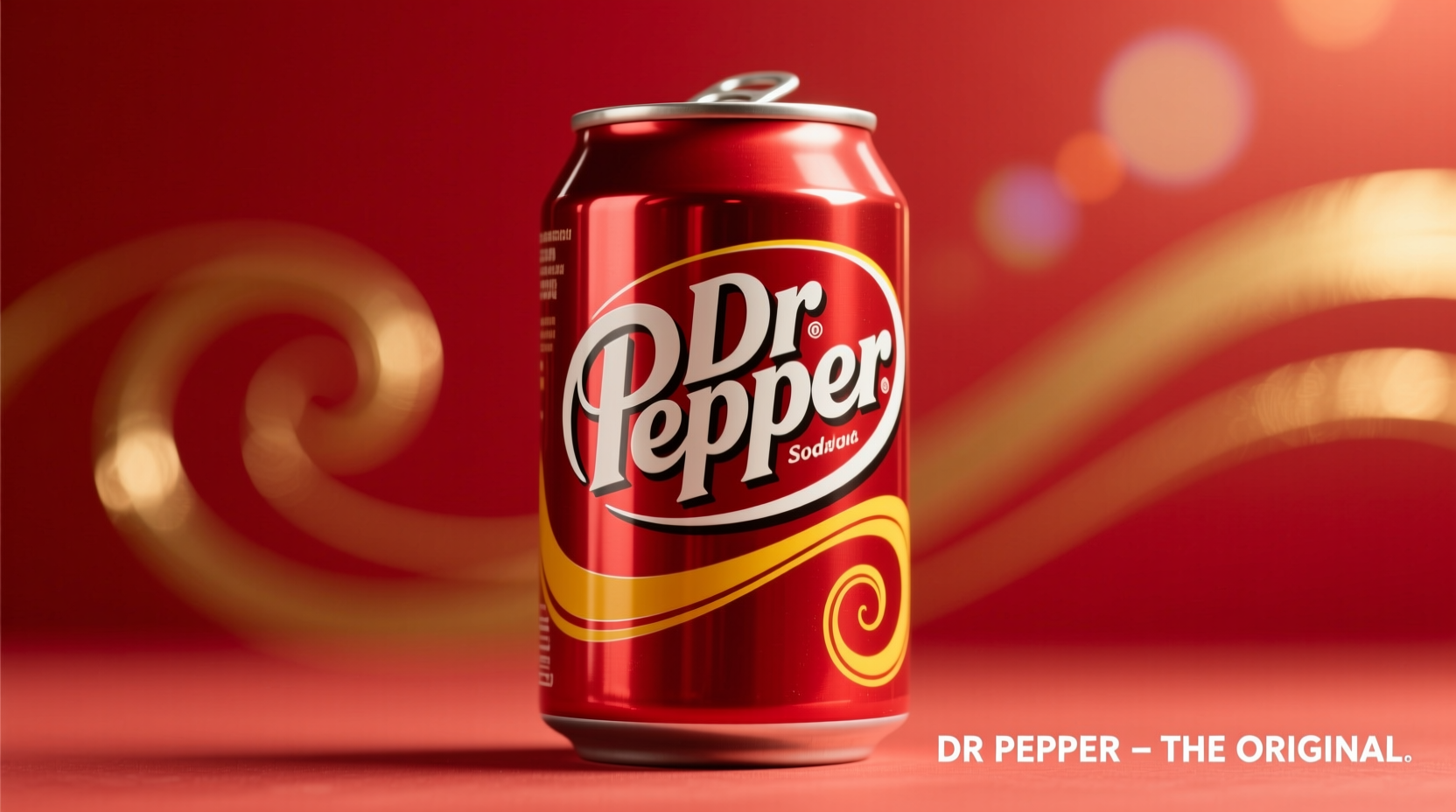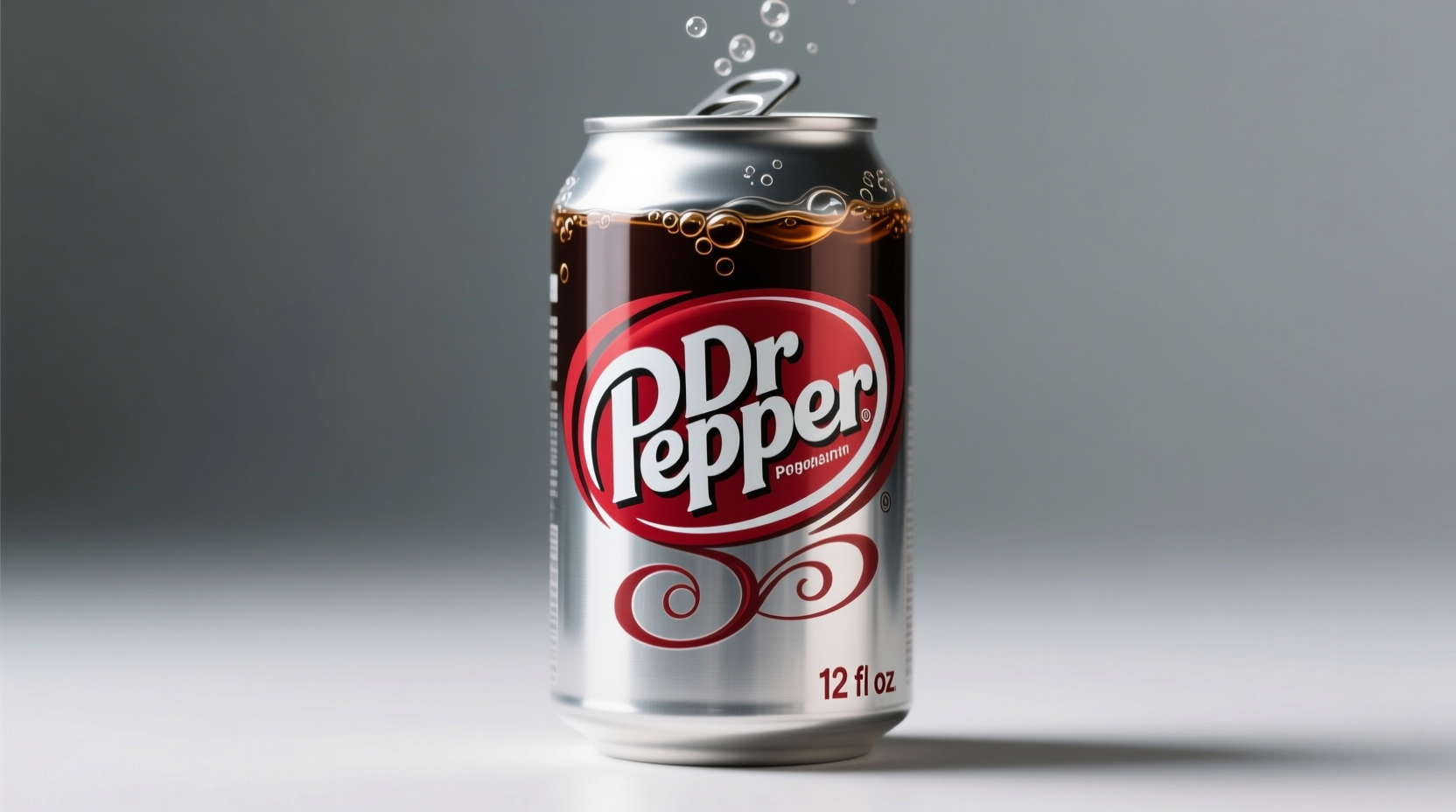Understanding the Classic Dr Pepper Can
When you pick up a standard 12-ounce aluminum can of Dr Pepper, you're holding a piece of American beverage history. The instantly recognizable red and yellow design has evolved over decades while maintaining its signature visual identity. Unlike many soft drinks that follow traditional cola or lemon-lime formulas, Dr Pepper delivers a distinctive flavor profile that's difficult to categorize—often described as a blend of 23 fruit flavors with subtle spice notes.

What's Inside Your Can: Ingredients and Nutrition
Understanding exactly what you're consuming is essential for making informed beverage choices. A standard 12-ounce can of Dr Pepper contains:
| Nutrient | Amount per 12oz Can | % Daily Value* |
|---|---|---|
| Calories | 150 | 8% |
| Total Fat | 0g | 0% |
| Sodium | 45mg | 2% |
| Total Carbohydrates | 40g | 14% |
| Sugars | 40g | ** |
| Caffeine | 41mg | ** |
*Percent Daily Values are based on a 2,000 calorie diet. **Daily Value not established.
The complete ingredient list includes carbonated water, high fructose corn syrup, caramel color, phosphoric acid, natural and artificial flavors, sodium benzoate (preserves freshness), and caffeine. The "23 flavors" remain a closely guarded secret, though citrus, cherry, licorice, and subtle spice notes are commonly detected by consumers.
Dr Pepper Can Evolution: A Historical Timeline
Dr Pepper's journey from fountain drink to iconic canned beverage spans more than a century. Understanding this evolution helps appreciate why the canned version has become so popular:
- 1885: Dr Pepper is first served at Morrison's Old Corner Drug Store in Waco, Texas
- 1904: First bottled version introduced, though early bottles were breakable and heavy
- 1924: Dr Pepper begins appearing in metal containers, initially as flat-top cans requiring a church key opener
- 1962: Introduction of the pull-tab can, eliminating the need for a separate opener
- 1975: Standardization of the 12-ounce can size becomes industry norm
- 1980s: Transition to lighter aluminum cans with the distinctive red and yellow "dynamic ribbon" design
- 2000s: Introduction of specialty can sizes including 7.5-ounce mini cans and 16-ounce tallboys
- Present: Eco-friendly aluminum cans with 70% recycled content, featuring easy-open tabs and modernized graphics
This historical progression reflects broader industry trends toward convenience, portability, and sustainability. According to the Aluminum Association, aluminum beverage cans have a recycling rate of approximately 50% in the United States, making them one of the most recycled beverage containers.
Practical Guidance for Dr Pepper Can Consumers
Knowing how to properly store, serve, and enjoy your Dr Pepper can enhances the experience while maintaining product quality:
Storage Recommendations
Store unopened cans in a cool, dry place away from direct sunlight. Ideal storage temperature is between 50-70°F (10-21°C). Avoid freezing, which can cause the can to expand and potentially rupture. Once opened, transfer remaining contents to a sealed container and refrigerate, consuming within 2-3 days for best flavor.
Serving Temperature Matters
For optimal flavor, serve Dr Pepper chilled between 34-38°F (1-3°C). This temperature range enhances the carbonation while balancing the sweetness. Many enthusiasts note that slightly warmer temperatures (around 45°F) allow more of the complex flavor notes to emerge.
Versatile Usage Beyond Straight Consumption
While delicious on its own, a can of Dr Pepper offers surprising versatility:
- Cocktail mixer: Creates excellent whiskey-based drinks like the "Dr Pepper Old Fashioned"
- Marinade base: The sugar content helps create beautiful caramelization on grilled meats
- Baking ingredient: Adds moisture and subtle flavor to cakes and brownies
- Float foundation: Makes a classic soda fountain treat when paired with vanilla ice cream
Consumer Considerations When Choosing Canned Dr Pepper
As beverage preferences evolve, understanding these key considerations helps make informed choices:
Diet and Sugar-Free Options
For those monitoring sugar intake, Dr Pepper offers several alternatives:
- Dr Pepper Zero Sugar (formerly Diet Dr Pepper): 0 calories, 0g sugar
- Dr Pepper Ten: 10 calories, 2g sugar
- Regular Dr Pepper: 150 calories, 40g sugar per 12oz can
According to market research from Beverage Industry Magazine, approximately 40% of Dr Pepper consumers now choose sugar-free options, reflecting broader industry trends toward reduced sugar consumption.
Environmental Impact of Aluminum Cans
Aluminum cans represent one of the most sustainable beverage packaging options available. The Aluminum Association reports that aluminum cans can be recycled repeatedly without degradation in quality, with the current recycling process using 95% less energy than producing new aluminum. A recycled can can be back on store shelves as a new container in as little as 60 days.
Shelf Life and Freshness Indicators
Dr Pepper cans typically maintain peak quality for 6-9 months when stored properly. Look for the Julian date code stamped on the bottom of the can, which indicates production date. While safe to consume beyond this timeframe, flavor quality may diminish. Signs of compromised quality include:
- Excessive hissing when opening (may indicate over-carbonation)
- Flat taste (insufficient carbonation)
- Off-flavors or unusual aftertaste
- Dented or bulging cans (potential spoilage)











 浙公网安备
33010002000092号
浙公网安备
33010002000092号 浙B2-20120091-4
浙B2-20120091-4